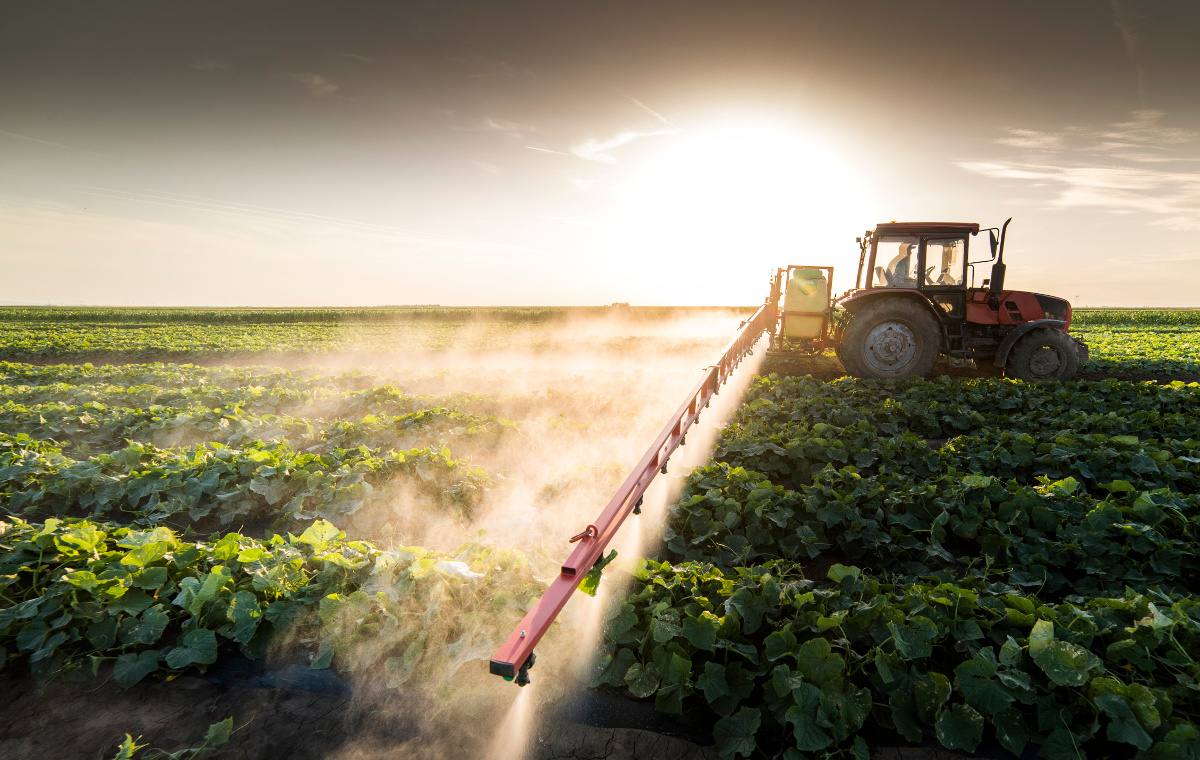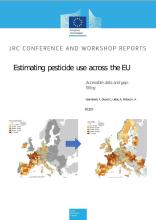Introduction
Pesticides play a crucial role in modern agriculture by safeguarding crops against pests and diseases that can drastically reduce yields. These substances are intentionally released into the environment to eliminate weeds, insects, fungi, and other organisms that negatively impact crop production.
Over the past 60 years, pesticides have significantly boosted agricultural productivity and improved food quality. However, the benefits of pesticide use are countered by notable disadvantages.
These include potential risks to human health through dietary and non-dietary exposure. Additionally, pesticides can harm the environment, affecting non-target organisms, ecosystems, soil health, biodiversity and water quality.
The European Union is committed to addressing these dualities through robust regulatory frameworks and innovative research initiatives, aiming for a sustainable future.

Robust Regulatory Frameworks
Recognizing the need to balance plant protection with potential harm, the European Union has implemented strict regulations on pesticide use. Strategies like the Farm to Fork Strategy, Biodiversity Strategy, and the Zero Pollution Ambition aim to reduce pesticide use and associated risks by 50% by 2030.
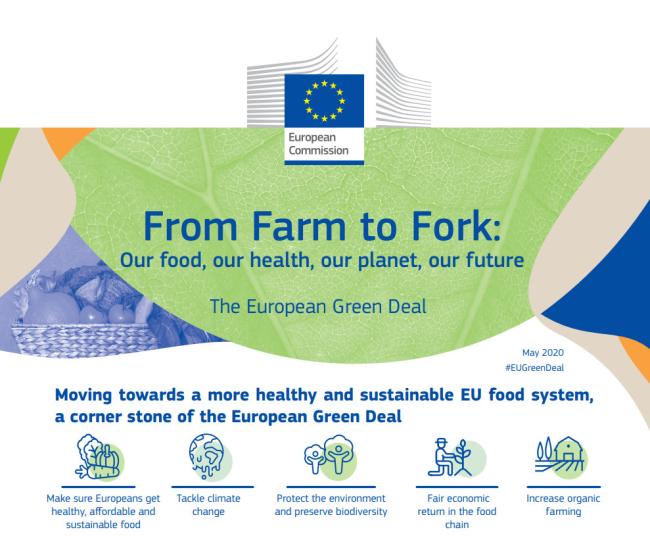
The Sustainable Use Directive (Directive 2009/128/EC) established a framework for the sustainable use of pesticides by reducing risks and impacts on human health and the environment.
Regulation (EC) 1185/2009 on pesticide statistics covers the collection of data on pesticide active substances' use and sales. While data on annual aggregated pesticide sales are available in EUROSTAT's public database, harmonized data on pesticide use across all Member States are still challenging to obtain due to variations in national surveys. The implementation of The Directive on Plant Protection Products (EU) 2023/564 that mandates electronic records for PPP use by 2026 as well as the Regulation (EU) 2022/2379 on statistics on agricultural input and output will create opportunities for more precise risk assessments with more precise and disaggregated data availability.
To better monitor and assess the risks associated with pesticide use, the European Union is actively working on refining and enhancing existing indicators related to pesticides. The goal is to integrate spatially explicit data and comprehensive risk assessments to improve pesticide use estimation and develop more detailed risk indicators.
The European Union is carrying on monitoring and research efforts, including:
- Farm to Fork and Biodiversity Strategies: show progress towards reducing pesticide use and risk
- Guidelines and tools: support the evaluation and approval of active substances
- Member States' monitoring: ensures compliance with legal limits for pesticide residues in food
- Large-scale monitoring: tracks pesticides in drinking water and other water sources
Overall, the European Union's comprehensive strategies and regulatory measures demonstrate a concerted effort to tackle the challenges of pesticide use, integrating scientific insights, policy developments, and innovative research to ensure a sustainable future aligned with global commitments.
Innovative research initiatives
Estimating pesticide across European Union: accessible data and gap-filling
Estimating pesticide use across the European Union is essential for understanding and mitigating its environmental and health impacts. A workshop report titled Estimating Pesticide Use Across the EU: Accessible Data and Gap-Filling outlines efforts to gather insights from experts in various member states on data availability regarding pesticide use. The aim is to develop a comprehensive European Union model for pesticide use estimation, assessing cumulative impacts.
The research highlights significant variations in data availability across countries like Austria, Belgium, Denmark, France, Germany, Ireland, Italy, Poland, Portugal, the Netherlands, and Spain. While some countries have detailed data on active substances, others provide aggregated data, posing challenges for harmonization. Discussions during the workshop considered using machine learning to create an EU-wide pesticide use model, which could incorporate factors like crops and climate for more accurate assessments.
As an output, a comprehensive and harmonized dataset at the regional level NUTS3 (NUTS Level 3 European administrative units) has been released.
Emissions of pesticides in the European Union: a new regional-level dataset
Using sales data and crop-specific application patterns reported by eight European Union countries, gathered from the workshop, a modelling framework was developed to estimate pesticide active substance usage on crops at the NUTS 3 level across the European Union.
The modeling framework also incorporates public information on crops, climate, and territorial characteristics. This led to the creation of a dataset that estimates emissions of 152 active substances, crucial for environmental fate and exposure modeling.
These estimates, available at the regional level, support improved risk assessments and policy development.
The active substances are categorized into main groups: fungicides and bactericides, herbicides, insecticides and acaricides, plant growth regulators, molluscicides, and other plant protection products.

The dataset is publicly accessible in the JRC Data Catalogue.
A screening study of the spatial distribution and cumulative toxicity of agricultural pesticides in the European Union’s waters
Building on datasets from previous research on pesticide use estimation and emission modeling, a comprehensive screening study was conducted to assess the spatial distribution and cumulative toxicity of agricultural pesticides in European Union waters. This study marked the first EU-scale evaluation of pesticide concentrations and their cumulative toxic effects in surface waters, focusing on 148 active substances.
The study employed a steady-state approach to predict pesticide concentrations in soil and water, using emissions data from 2015 and land cover information at a 1 km resolution.
The findings revealed that the cumulative toxicity of pesticide mixtures often exceeds critical thresholds in significant portions of the European Union's stream network. Specific locations showed that a limited number of substances drive cumulative toxicity, varying by region.
Although the study advanced understanding of pesticide impacts, it highlighted the need for more detailed data on pesticide emissions and use patterns. These insights are crucial for shaping future regulations and policy initiatives.
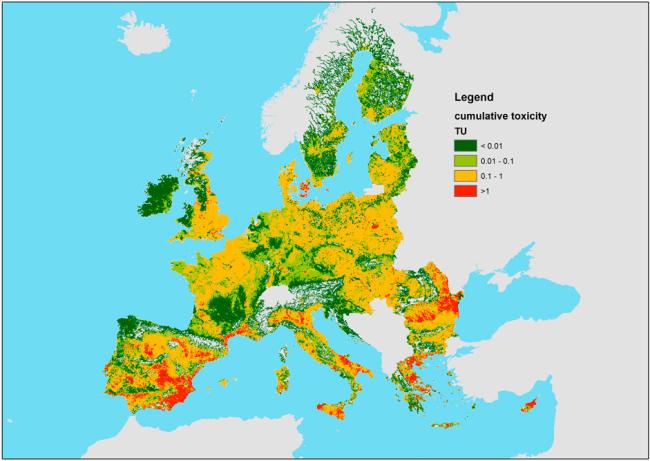
Development of a Spatial Risk Indicator for Monitoring Residential Pesticide Exposure in Agricultural Areas
The Exploratory Research PESTIRISK project, launched by the JRC, aims to develop a spatially explicit pesticide health risk indicator, focusing on residential pesticide exposure in agricultural areas. By integrating pesticide sales data, Earth observation data, and exposure models, the project has developed a Pesticide Risk Indicator (PRI) , mapping potential pesticide loads at the parcel level.
A case study in France demonstrated that around 13% of the population might be exposed to varying pesticide levels due to proximity to treated crops. This underscores the importance of granular pesticide sales data in monitoring exposure and informs risk reduction strategies. The PRI is a critical tool in the EU's broader strategy to promote sustainable agriculture and public health.
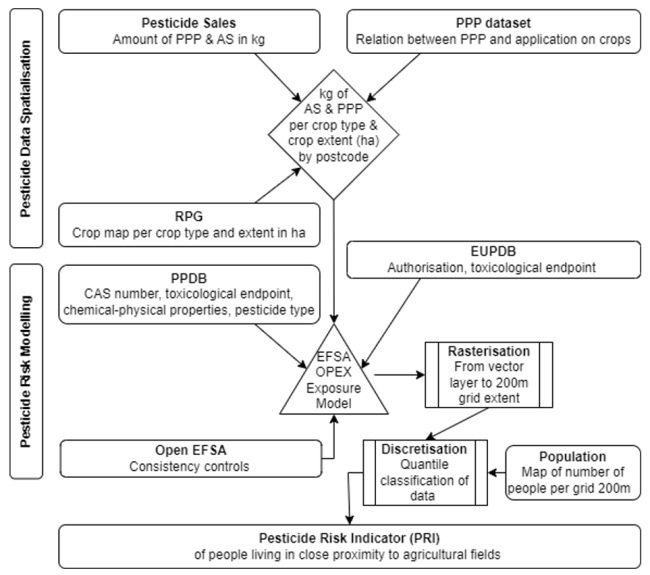
EU-Wide Collaboration and Future Directions
The JRC organized a workshop titled Strengthening Pesticide Risk Indicators: Bridging Data, Policy, and EU Collaborations to enhance the EU's capacity for monitoring and mitigating pesticide exposure risks. The workshop brought together experts from member states, EU DGs, and academia to share advancements in pesticide risk indicators and foster collaboration.
Discussions emphasized using comprehensive pesticide use data, Earth observation information, and EU-wide monitoring to enhance risk indicators, assessing progress towards policy objectives. Presentations covered the spatial pesticide risk indicator for non-dietary exposure assessment over France and the legacy of previous workshops on pesticide emissions. Participants explored data and indicators for monitoring risks to aquatic and soil organisms, with policymakers contributing to contextual discussions. The EU's objective to reduce pesticide use and risk by 50% by 2030 was reiterated, highlighting the necessity of a harmonized database for pesticide product labels and solutions for obtaining detailed spatial information and trends.
Research on pesticide use restrictions near residential areas examines potential regulations to balance agricultural productivity with public health and environmental protection. Proposals within the EU suggest banning PPPs near residential homes, addressing public concern over pesticide drift. Research on buffer zones and pesticide exposure examines the effectiveness of varying buffer zone sizes, offering insights into potential exposure levels based on land use and proximity.

Towards a robust EU indicator
Efforts like the Pesticide Load Index (PLI) study integrate EU-wide active substance emissions with detailed use data to link pesticide usage to ecological impacts. By incorporating application rates and toxicities, the PLI provides spatially explicit maps of pesticide presence across air, water, and soil, identifying regions with elevated eco-toxic levels and informing risk mitigation measures.
The PLI study supports the European Union's Farm to Fork and Biodiversity strategies. The PLI's detailed analyses identify predicted hotspots and variations across bio-climatic regions and crop types, providing essential data for informed decision-making.
By reducing reliance on chemical pesticides and promoting nature-based solutions, the European Union can enhance agricultural sustainability. The project references databases and risk indicators that complement the PLI's findings, aligning with broader European Union research initiatives on pesticide regulation.
This holistic approach informs regulatory decisions, supports the European Union's zero pollution ambition, and promotes sustainable agricultural practices. Collaborative research and data sharing advance towards a future where food security and environmental health are mutually reinforcing objectives.

